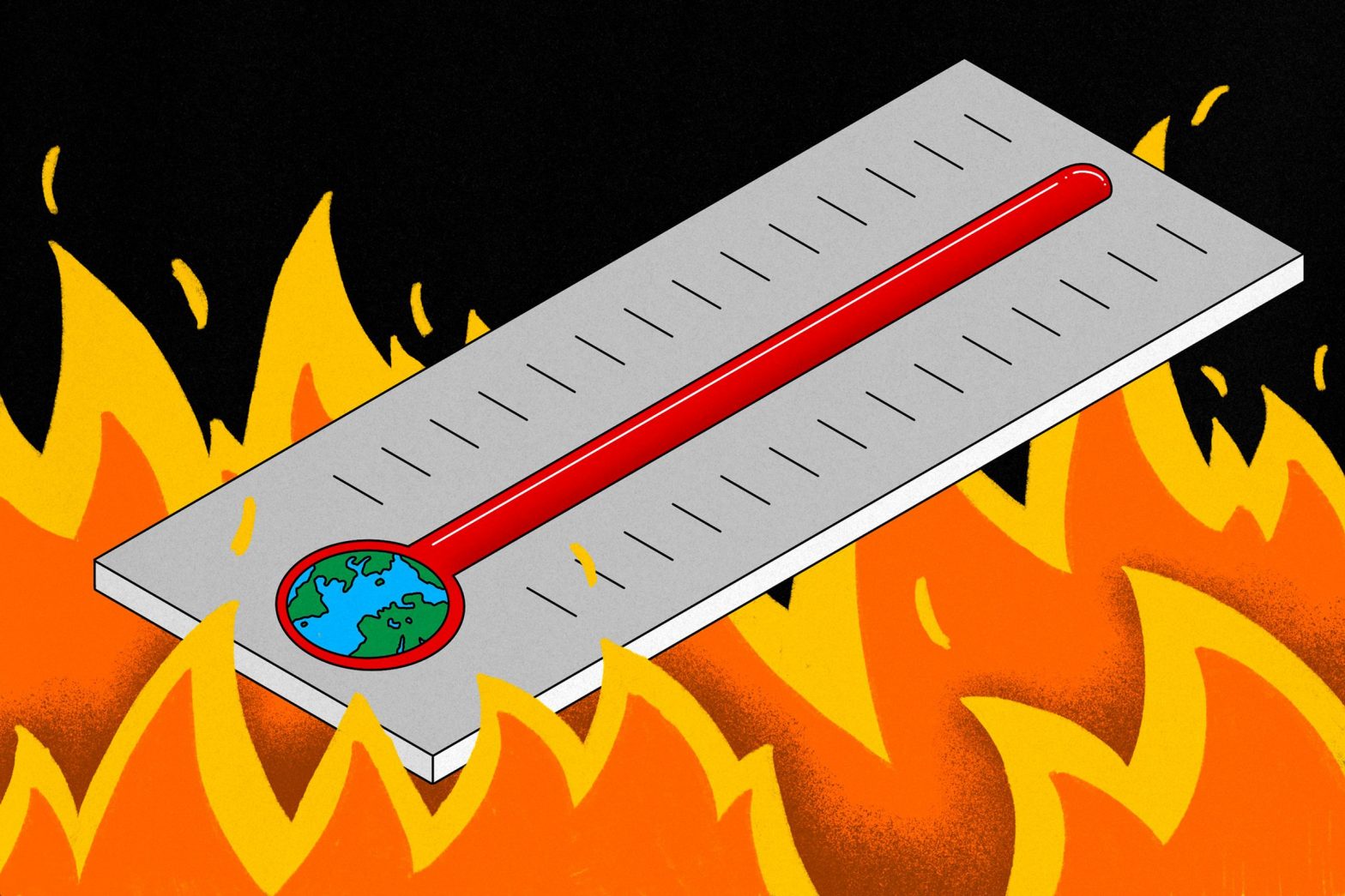/
Prepare for temperatures reaching ‘uncharted territory,’ the World Meteorological Organization warns.
Share this story
If you buy something from a Verge link, Vox Media may earn a commission. See our ethics statement.
:format(webp)/cdn.vox-cdn.com/uploads/chorus_asset/file/24533950/STK438_global_warming_climate_change_fire.jpg)
The next five years are almost guaranteed to be sweltering, the World Meteorological Organization (WMO) warned today. Climate change has already raised baseline temperatures for the planet. Now, a weather pattern known as El Niño is going to make things even hotter when it develops later this year.
That one-two punch from El Niño and climate change is expected to “push global temperatures into uncharted territory,” WMO Secretary-General Petteri Taalas said in a press release today. “This will have far-reaching repercussions for health, food security, water management and the environment. We need to be prepared.”
There’s a 98 percent chance that one of the following five years will be the warmest on record, according to a WMO report released today. There’s also a 98 percent likelihood that the average temperature for the entire five-year period will be hotter than the previous five years.
The planet is already running a fever. The last eight years have been the eight hottest on the books, the WMO reported in January. In the past few years alone, we’ve witnessed the jaw-dropping damage that extreme temperatures can bring.
The most extreme summer heatwave ever recorded in North America buckled roads and triggered a spike in emergency department visits in the Pacific Northwest US in 2021. China suffered its most severe heatwave on record last year. It was so widespread and long-lasting — stretching out more than 70 days — that it was likely also the most severe heat spell ever documented in the world, according to weather historian Maximiliano Herrera. Another record-smashing heatwave in July of last year sent temperatures in the notoriously cool and cloudy UK soaring above 40 degrees Celsius for the first time — an event researchers found to be “virtually impossible” without climate change.
All of that went down despite the mitigating effects of a rare and unusually long-lasting “triple-dip” La Niña from September 2020 until the March of this year. Think of it as the opposite of El Niño; La Niña is a weather pattern that has a cooling effect on the planet.
Right now, with neither La Niña nor El Niño taking place, trade winds over the Pacific Ocean help push warm waters westward from South America toward Asia. As that happens, cooler water rises from deep in the ocean toward the surface. Those trade winds weaken with El Niño, allowing warm water to flow back east. The warmer water also pushes the Pacific jet stream, a fast-flowing air current, southward — which can influence the weather.
El Niño is expected to take shape sometime between May and July and last at least until the winter, according to the National Weather Service Climate Prediction Center. It can take up to a year before El Niño starts to affect global temperatures, the WMO says, which could be 2024 in this case.
With El Niño likely to push the mercury up even higher than we’ve seen during the persistent La Niña event over the past few years, global temperatures could soon breach a worrying benchmark. There’s now a 66 percent chance that during at least one year between 2023 and 2027, the annual average global temperature will rise more than 1.5 degrees Celsius higher than the preindustrial era (aka before burning fossil fuels created enough greenhouse gas pollution to heat the planet).
To be clear, 1.5 degrees of warming is a big deal. The Paris climate agreement strives to keep the world from warming beyond that threshold. So far, the planet has warmed by around 1.1 degrees Celsius above preindustrial levels — which is the main driver of the more extreme weather we’re already seeing today. There’s still a slim window of time to achieve that goal — since the WMO predicts that the world will only temporarily overshoot the 1.5-degree target over the next five years.
“This report does not mean that we will permanently exceed the 1.5°C level specified in the Paris agreement, which refers to long-term warming over many years. However, WMO is sounding the alarm that we will breach the 1.5°C level on a temporary basis with increasing frequency,” Taalas said in the press release.
Not that long ago, in 2015, the chance of the world experiencing warming above 1.5 degrees Celsius was near zero, according to the WMO. And in 2021, the likelihood was just 10 percent. But we’re living in a different world today — and without swift action to tackle climate change, it’s going to keep throwing us a lot more curveballs.
